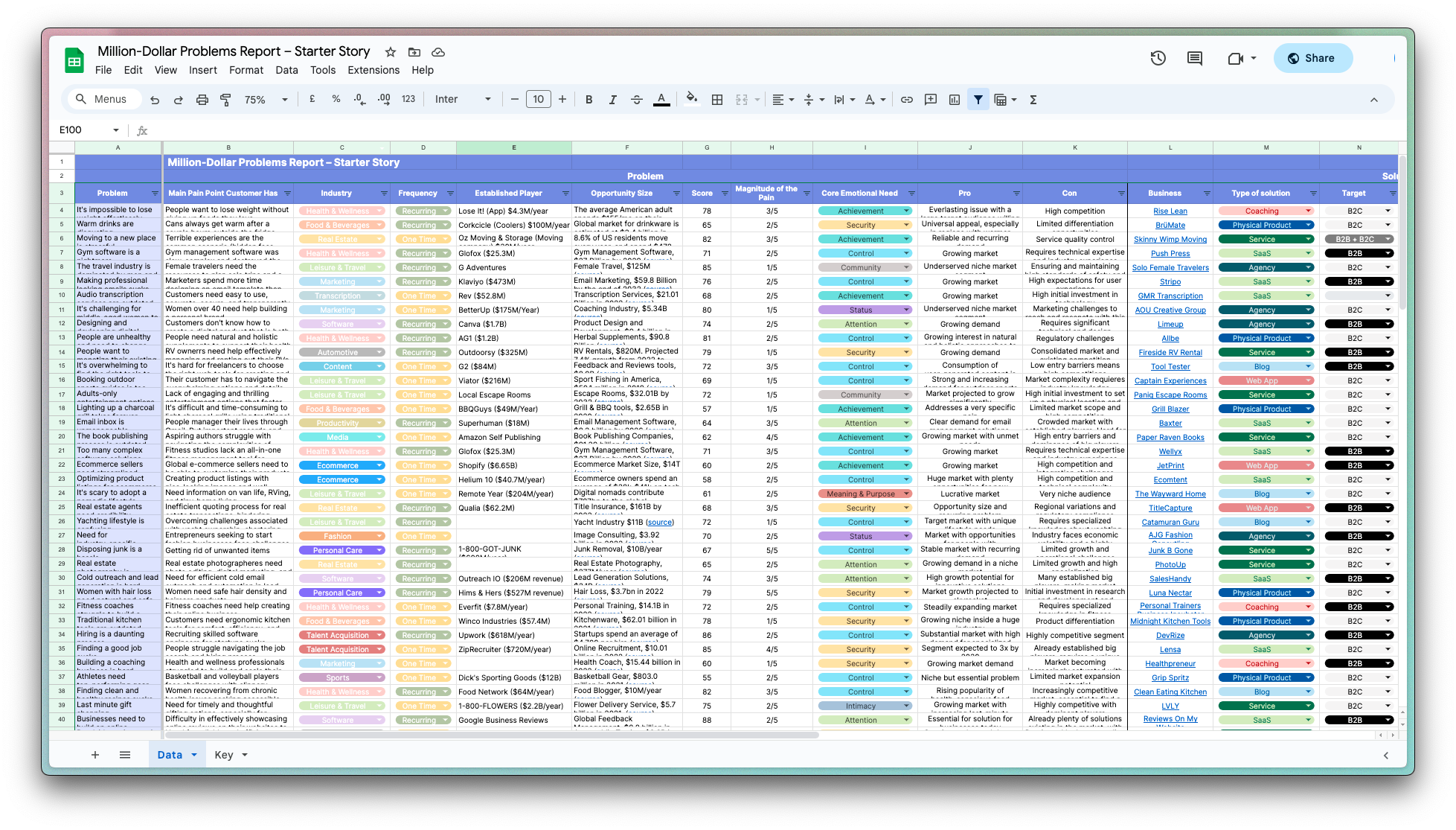|
|
No-code email template builder for marketers.
|
$533K
monthly
|
90
days
|
$0.80
per visitor
|
$100K
to start
|
58
out of 100
|
|
|
|
|
|
|
|
$233K
monthly
|
—
days
|
—
per visitor
|
$500
to start
|
90
out of 100
|
|
|
|
|
|
|
Create Viral Video Memes In Seconds.
|
$2K
monthly
|
—
days
|
—
per visitor
|
$80
to start
|
93
out of 100
|
|
|
|
|
|
|
|
$5K
monthly
|
240
days
|
$5.00
per visitor
|
—
to start
|
63
out of 100
|
|
|
|
|
|
|
|
$20K
monthly
|
—
days
|
—
per visitor
|
$0
to start
|
92
out of 100
|
|
|
|
|
|
|
|
—
monthly
|
—
days
|
—
per visitor
|
$299
to start
|
64
out of 100
|
|
|
|
|
|
|
|
$113K
monthly
|
90
days
|
—
per visitor
|
—
to start
|
57
out of 100
|
|
|
|
|
|
|
|
$200
monthly
|
180
days
|
$0.01
per visitor
|
$0
to start
|
91
out of 100
|
|
|
|
|
|
|
|
$20K
monthly
|
30
days
|
$0.24
per visitor
|
$4K
to start
|
72
out of 100
|
|
|
|
|
|
|
|
$26.2K
monthly
|
14
days
|
$0.66
per visitor
|
$500
to start
|
90
out of 100
|
|
|
|
|
|
|
|
$223K
monthly
|
—
days
|
—
per visitor
|
—
to start
|
42
out of 100
|
|
|
|
|
|
|
|
$85K
monthly
|
180
days
|
—
per visitor
|
$50K
to start
|
67
out of 100
|
|
|
|
|
|
|
Email marketing solution for bootstrappers.
|
$20K
monthly
|
330
days
|
$5.02
per visitor
|
$5K
to start
|
90
out of 100
|
|
|
|
|
|
|
AI-powered image and video creation platform.
|
$11.5K
monthly
|
14
days
|
$0.08
per visitor
|
$500
to start
|
92
out of 100
|
|
|
|
|
|
|
|
$9K
monthly
|
6
days
|
$0.90
per visitor
|
$0
to start
|
91
out of 100
|
|
|
|
|
|
|
Estii: Pricing platform for service sales teams.
|
$10K
monthly
|
200
days
|
—
per visitor
|
$20K
to start
|
76
out of 100
|
|
|
|
|
|
|
|
$60K
monthly
|
410
days
|
—
per visitor
|
$50K
to start
|
46
out of 100
|
|
|
|
|
|
|
|
—
monthly
|
270
days
|
—
per visitor
|
$50K
to start
|
85
out of 100
|
|
|
|
|
|
|
|
$25K
monthly
|
60
days
|
—
per visitor
|
$5K
to start
|
82
out of 100
|
|
|
|
|
|
|
"AI translation and voiceover for global reach."
|
$83K
monthly
|
—
days
|
—
per visitor
|
—
to start
|
54
out of 100
|
|
|
|
|
|
|
|
$14K
monthly
|
180
days
|
—
per visitor
|
$2K
to start
|
81
out of 100
|
|
|
|
|
|
|
|
$30K
monthly
|
30
days
|
—
per visitor
|
$2K
to start
|
72
out of 100
|
|
|
|
|
|
|
|
$50K
monthly
|
90
days
|
$0.66
per visitor
|
$10K
to start
|
52
out of 100
|
|
|
|
|
|
|
Reverse job board for Ruby on Rails developers.
|
$13.3K
monthly
|
15
days
|
—
per visitor
|
$500
to start
|
91
out of 100
|
|
|
|
|
























